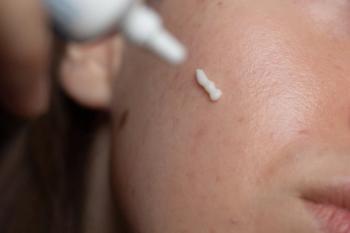
Orit Markowitz, MD, Explains How a Color Wheel Approach Can Sharpen Dermoscopic Decision-Making
Key Takeaways
- Dr. Orit Markowitz promotes a "color wheel" approach for skin cancer diagnostics, emphasizing a high-level view over detailed pattern analysis.
- The method involves asking key questions about lesion elevation, clinical color, and dermoscopic colors to guide initial evaluations.
Orit Markowitz, MD, shares how her color wheel method boosts diagnostic clarity in dermoscopy by simplifying how clinicians assess benign lesions.
Orit Markowitz, MD, founder and CEO of
In a conversation about the talk, Markowitz described her “color wheel” approach: a method that encourages clinicians to step back from granular pattern analysis and instead take a more intuitive, high-level view of skin lesion evaluation.
A Simpler Lens for Complex Diagnoses
“The color wheel approach is an approach that just sort of thinks about benign versus malignant,” said Markowitz. “Dermoscopy is a very detailed specialty... and because it’s so detailed and literally microscopic, we sort of tend to kind of go into a lot of details, sometimes almost getting into the weeds.”
Markowitz explained that while dermoscopy traditionally emphasizes detailed pattern recognition, this can sometimes lead to unnecessary biopsies or clinical hesitation due to over-analysis.
From Microscopic to Macro Thinking
Tasked with writing a textbook that reflected her clinical method, Markowitz decided to flip the conventional model.
“It’s the polar opposite of getting into the weeds,” she said. “I like to kind of decide: Do I need to cut this human being? Or now, nowadays, we have non-invasive imaging, so we don’t necessarily need to cut.”
Rather than diving headfirst into dermoscopic structures and pigment networks, Markowitz encourages clinicians to evaluate the overall clinical picture first, and then use patterns to confirm or refine their judgment.
The Color Wheel Approach in Practice
The core of the method is based on asking a few key questions upfront:
- Is the lesion elevated or flat?
- What is its clinical color?
- What dermoscopic colors are present?
“And then if I need to, I’ll go into the weeds of patterns, but often I already know just based on those initial questions whether it’s something that needs to be left alone or removed,” she said. “The color wheel approach kind of takes that into perspective where we just think about not just what we see dermoscopically, but even what we see clinically.”
This technique allows clinicians to triage lesions more quickly, reserving advanced pattern analysis for edge cases or diagnostic uncertainty.
Make sure to keep up to date with the latest in coverage from the conference and subscribe to Dermatology Times to receive daily email updates .
Newsletter
Like what you’re reading? Subscribe to Dermatology Times for weekly updates on therapies, innovations, and real-world practice tips.


















